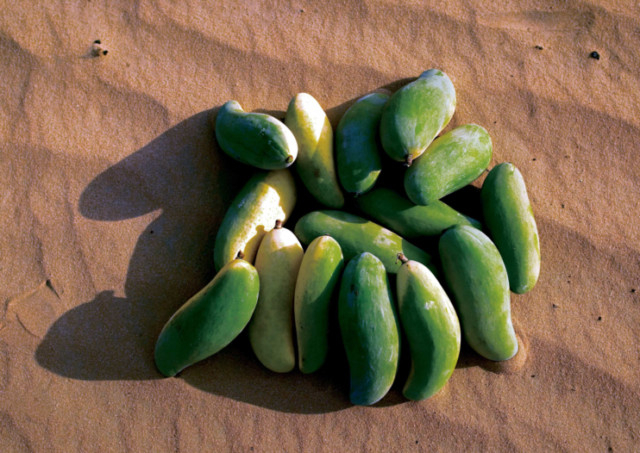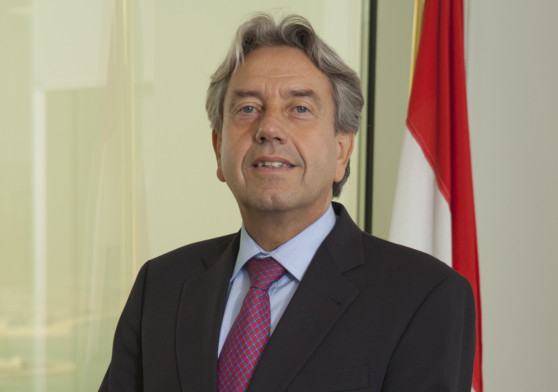
The Dutch have had a substantial hand in forming the UAE’s modern business environment and stunning architecture. The iconic Palm Islands sprouted from the Gulf’s shallows into magisterial existence thanks, in large part, to Dutch dredging company Van Oord. And in the same way as the artificial archipelagos today shape the global image of Dubai’s coastline, so have the multifarious Dutch businesses helped shape the UAE’s commercial districts.
“With roots established in the 1970s, we have been present throughout the formative years of the UAE,” says Gerard Michels, Dutch Ambassador to the UAE.
“The Dutch being known as a trading nation, it’s not surprising that our activity with the UAE has always been characterised by this occupation.”
The ambassador tells GN Focus relations between the Netherlands and the UAE are “excellent”. Indeed, the entrepreneurial nature of the Dutch dovetails with the UAE’s commercial marketplace, which is reflected in the performance of the countries’ financial give-and-take.
Stable figures
Statistics published by the Embassy for the first three quarters of last year show two-way trade totalling $3.4 billion (Dh12.48 billion). Dutch exports comprise some $2.5 billion of the figure.
“Without the Q4 numbers yet taken into account, the published statistics seem fairly stable with the previous year. In 2011, bilateral trade totalled approximately $4.75 billion, with exports from the Netherlands to the UAE standing at $3.2 billion and imports reaching $1.5 billion,” says Michels.
Exports and foreign direct investment (FDI) from the fifth-largest economy in the European Union have become key drivers behind the UAE’s journey towards becoming one of the Middle East’s economic powerhouses. Today, the UAE is the second-largest trading partner in the region, behind only Saudi Arabia, and the Netherlands’ largest export partner in the GCC.
“As a comparison, our exports to the UAE in 2011 total approximately one-third of our exports to China and Russia in the same year. The country’s exports to Brazil in 2011 were almost equal to exports to the UAE. These comparisons with such large trading partners are significant.”
The UAE is the second-largest importer of the Netherlands’ famed agro-food commodities, ahead of Germany, Brazil and France and behind only the US. Last year the UAE forked out $95.4 million on produce from western Europe.
This year is an intriguing one for Dutch nationals residing in the UAE, as they will watch from afar the changing of the royal guard. The abdication of Queen Beatrix — who was in the UAE on a state visit last year — means the kingdom will have a male monarch for the first time in more than a century.
Some 5,000 Dutch nationals in the UAE will be watching the handover and celebrating the Queen’s departure with eagerness, Michels says. “There is overwhelming popular support for the monarchy. Queen Beatrix has reigned over the Dutch for more than 30 years; she has been our Head of State for all my professional life. She was absolutely dedicated and committed both as a queen and on a personal level.
“I was privileged to observe these qualities during Her Majesty’s highly successful state visit to the UAE in January 2012,” says Michels.
Young immigrants
Robert de Leeuw, Dutch Consul General in Dubai, says his office has noticed an increase in Dutch nationals immigrating to the UAE in the past two years.
“There has been an influx of Dutch coming over here since 2010. And especially youngsters between the ages of 22 and 30, who leave school or university and can’t find a job are increasingly looking to come across [to the UAE], given the current economic situation in Europe,” he says.
In addition to permanent migration, tourism between the two countries is on the up. While the Dutch don’t have a specific department in the UAE to promote inbound tourism to the Netherlands, De Leeuw says it is something he would like to see implemented.
“This is something we need some more means to be able to push [tourism]. There is an enormous financial potential in this: Everybody wants to have dirhams spent in their country,” he adds.
Good response
In 2010, an estimated 60,000 tourists visited the UAE from the Netherlands. The following year, 85,000 Dutch visitors flocked to the UAE, marking a gradual increase in traffic heading here.
Meanwhile only 4,000 visas were issued to individuals residing in the UAE to travel to the Netherlands, including both leisure and business visa applications. “This doesn’t necessarily reflect the number of tourists to the Netherlands, but gives an indication of people having the intention to travel to the Netherlands,” says Michels.
“Some of our luxury hotels, such as Hotel de l’Europe in Amsterdam, are very interested to tap into the UAE market and are working actively with the airlines flying directly to Amsterdam. We’re seeing a good response on these efforts.”
With Royal Dutch KLM, Emirates, Etihad (as of next month) and various low-cost carriers combining to offer direct daily flights between The Netherlands and the UAE, travelling between the two countries has never been easier, and could be the kick-start De Leeuw is looking for.





